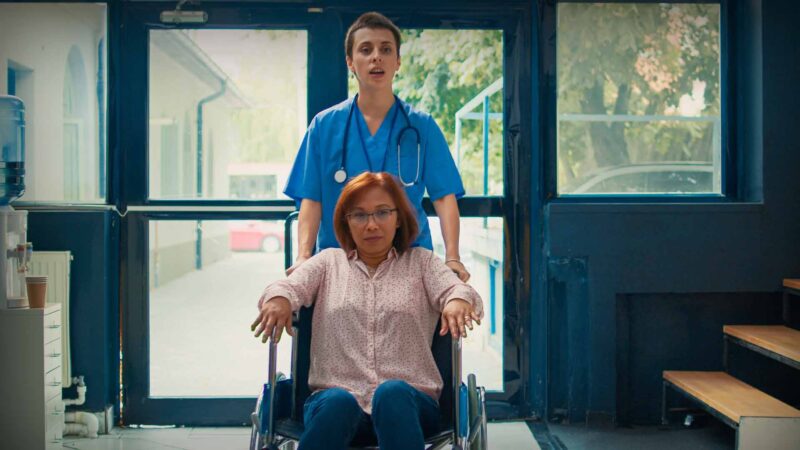In Australia in the last five years, an estimated 6066 women per year have undergone hysterectomies to treat fibroid-related diseases, while just 145 women each year have undergone a uterine artery embolisation, or UAE.
The procedure can effectively treat the majority of bleeding uterine fibroids. Each year, thousands of Australian women undergo invasive and life-altering hysterectomies to treat debilitating pain and blood loss caused by uterine fibroids. But there’s another option: a minimally invasive, pin-hole procedure that treats the symptoms, yet leaves the uterus intact.
Professor Warren Clements, interventional radiologist and head of the UAE service at The Alfred, said despite the proven safety and efficacy of the procedure – which was developed in the 1990s – it is simply not provided as an option to many women, something he urgently wants to change.
“Fibroids are highly prevalent in society and women need access to a range of different treatments so that they can choose what is the best for them,” Prof Clements said in an interview with Australian Health Journal.
“Every year, many women have a hysterectomy who would be suitable for a non-surgical alternative. UAE is an amazing non-surgical treatment and allows women to keep their uterus if they want to.”
The procedure is all done through a single pinhole incision, whereas a hysterectomy requires open surgery. It involves using low-dose x-rays and contrast dye to guide catheters through the arteries towards fibroids in the uterus. A medication is used to block the blood supply to the fibroids, which causes them to shrink. The procedure takes about half an hour, is done under ‘twilight’ sedation, and only requires one overnight recovery stay.
”Many women aren’t aware that this is a very minor procedure compared to hysterectomy,” Prof Clements said. “Women can resume normal activities the following day. The recovery is short, and most women can go back to work within a week. More than 90 per cent of women with heavy periods will have significant improvement in their symptoms after UAE.”
Professor Warren Clements, is also Honorary Researcher – Interventional Radiology, National Trauma Research Institute, Professor, Interventional Radiologist (IR) and the Head of Fluoroscopy in the Department of Radiology at Alfred Health. He is also a Fellow of the Royal Australian and New Zealand College of Radiologists (RANZCR).
Credit: Alfred Health
You Might also like
-
Contrasting Population Needs and Alternative Funding Models
Dr Jaspreet Saini is a GP with a decade of experience, practicing in West Pennant Hills and Rooty Hill, New South Wales. He began his medical journey at Monash University, followed by internships and residency at Blacktown Hospital, in Western Sydney. Instead of confining himself to a single specialty, he pursued general practice to explore various facets of medicine.
-
Redefining diversity in clinical trials
Ensuring inclusion, diversity, equity and patient input in the development of novel drugs and medical devices has become well accepted in health care. However appropriate implementation of these elements has been a challenge for many. Only by implementing these conscious inputs can patient outcomes be improved and health disparities in marginalised groups be addressed.
Australian Health Journal spoke to Gillian Mason, Consumer and Community Involvement Lead at Hunter Medical Research Institute in Newcastle, NSW on this topic discussed at the recent ARCS Conference in Sydney.
-
Stroke care advances in translated research
New nurse-led protocols for stroke patients, based on ACU research, led by the Nursing Research Institute, have resulted in changes to policy, guidelines and clinical practice in Europe and Australia. The protocols were developed through the Quality in Acute Stroke Care (QASC) Trial (published in the Lancet, 2011) to manage fever, hyperglycaemia and swallowing (FeSS) post-stroke.



